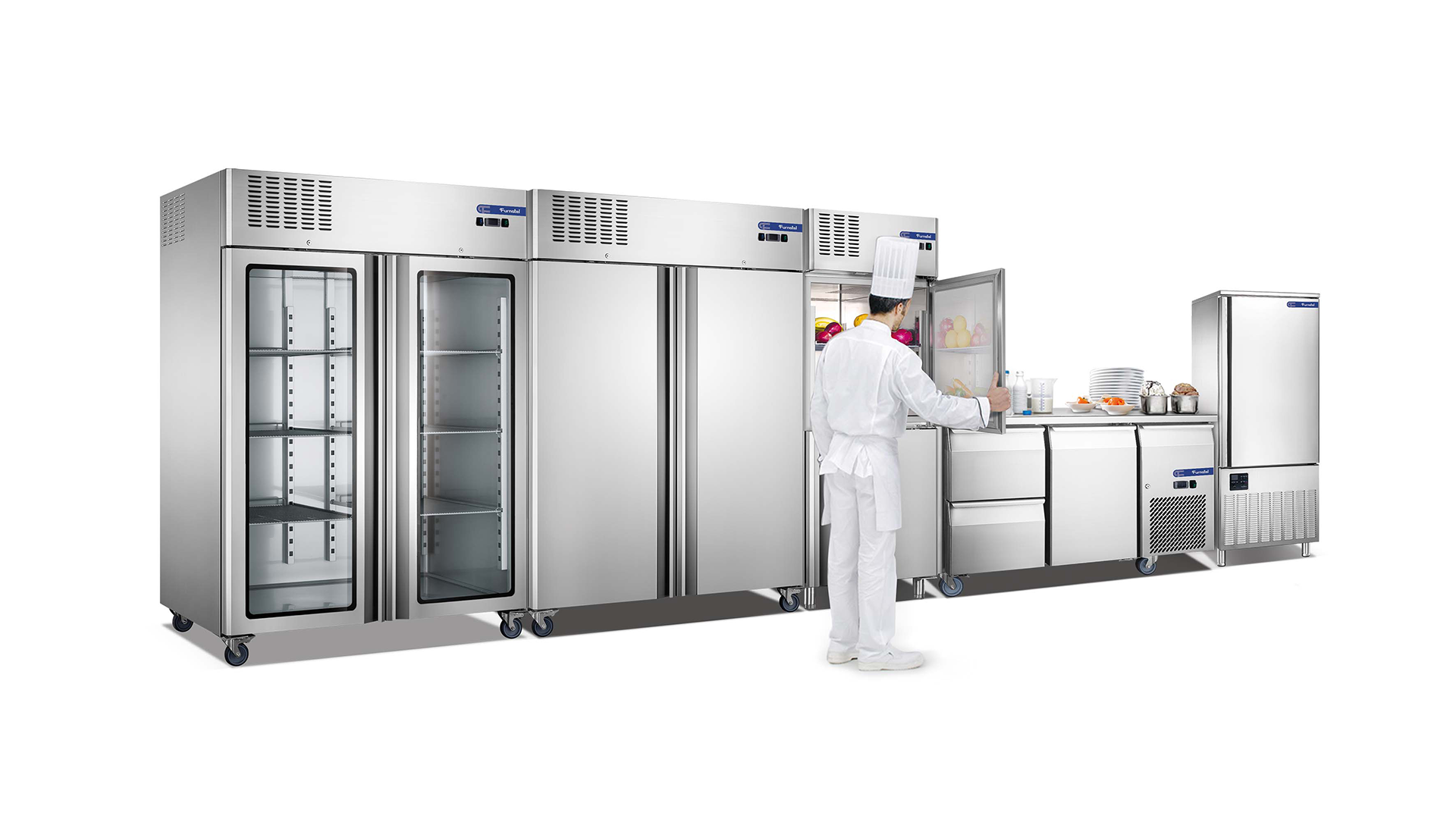News
Essential Refrigeration Solutions for Food Trucks in 2025
Key Factors in Refrigeration Selection
Running a food truck is a high-stakes balancing act: every square inch counts, margins are tight, and a single equipment failure can derail your day. To thrive in 2025’s competitive mobile kitchen landscape, your refrigeration setup must work with your workflow, not against it. Let’s break down the crucial factors:
1. Space Optimization
Imagine this: You’re prepping orders during a lunch rush, elbows bumping against warm equipment as you scramble for lettuce. Chaos, right? With most food trucks operating in spaces smaller than a studio apartment, under-counter refrigerator freezers and small countertop refrigerated display cases are game-changers.
Modular Layout is the key element to take advantage of the limited space in a food truck's kitchen. It allows you to adjust the units to fit irregularly shaped ingredients.
2. Energy Efficiency
Did you know that food trucks can waste up to $1,800 annually on inefficient cooling? A 2024 National Mobile Kitchen Report found that upgrading to inverter-driven commercial refrigerators can cut energy bills by 35–40%, enough to fund a monthly marketing budget.
Shinelong’s freezing technology takes this further. By optimizing compressor cycles based on ambient temperature, our units maintain consistent cooling during extreme summers or winters without guzzling power.
3. Built to Endure the Road’s Rough Rhythm
Standard kitchen equipment wasn’t designed for the rigorous road trip environment. But if you plan to set up a food truck service business, you have to consider more uncertain factors when selecting refrigeration units. That’s why Shinelong’s stainless steel refrigeration equipment undergoes brutal testing. Key upgrades for mobility:
- Locking casters that stay put at 25° inclines
- Shock-absorbent door latches to prevent midnight leaks
- Rust-proof epoxy coatings for coastal routes
4. Precision Cooling
Imagine losing $600 worth of salmon because your fridge fluctuated by 3°C during a festival. Scary? Absolutely. Modern solutions like dual-zone blast freezers let you flash-freeze batch-cooked proteins at -30°C while keeping dairy at 3°C. Pro tip: Pair with Bluetooth thermometers that ping your phone if temperatures drift.
5. Menu-Driven Design
A fried chicken truck needs cooling coolers that are different from a vegan smoothie bar. During a Shinelong consultation, we ask three questions to help us pinpoint your catering model precisely:
- Do you need rapid access during service, like refrigerated chef bases for sushi?
- Are you storing bulk frozen goods, like reach-in freezers for burger joints?
- Does your branding demand customer-facing displays, like countertop refrigerated cases for artisanal desserts?
2025’s Must-Have Refrigeration Gear for Mobile Kitchens
Under Counter Combo Units
Shinelong’s under-counter refrigerator redefines compact efficiency for food truck kitchens. Designed to slide seamlessly beneath standard counters, this space-saving powerhouse boasts 30kg of storage capacity on adjustable, plastic-coated shelves—perfect for organizing fresh produce, proteins, and prep containers without clutter. Its advanced cooling system combines interior compression technology with strategically punched air vents, delivering rapid temperature recovery even during nonstop service hours. Self-closing doors eliminate energy-wasting gaps, while the digital thermostat maintains exact temperature settings (±0.5°C) to prevent spoilage and reduce power consumption. The scratch-resistant stainless steel exterior isn’t just durable—it wipes clean in seconds, ensuring your kitchen stays FDA-compliant and visually polished.
Reach-In Refrigerator/Freezer
Crafted from commercial-grade stainless steel 304, Shinelong’s reach-in refrigerator/freezer balances rugged durability with precision performance. Ideal for meal-prep-focused trucks, its dual-zone design maintains optimal temperatures for diverse ingredients: think 2°C in the fridge for marinated meats and -22°C in the freezer for frozen staples like plantains or dough. The Dixell thermostat—a gold standard in commercial kitchens—ensures unwavering temperature control, while insulated panels and airtight seals minimize energy loss. Remarkably, this unit operates on less power than three household microwaves, a critical advantage for mobile kitchens prioritizing sustainability without sacrificing storage capacity.
Blast Freezers
Shinelong’s blast freezers are engineered to tackle the high-speed cooling demands of food truck operations. By rapidly dropping temperatures from 90°C to 3°C in under 90 minutes, these units halt bacterial growth and preserve texture in batch-cooked proteins, sauces, and baked goods, key for trucks prepping large quantities ahead of service. Their compact, road-ready design features vibration-resistant compressors and reinforced stainless steel frames to withstand constant transit, while energy-efficient cooling cycles prevent excessive power drain. With multi-zone temperature settings and a footprint tailored for tight kitchens, this freezer ensures food safety and quality retention without monopolizing precious workspace.
Glass-Front Display Fridges
Why describe your rainbow salad bowls when you can showcase them? One of our clients who started up salad trucks saw a 20% uptick in upsells after installing a lighted countertop refrigerated display case. Customers now add feta or avocado because they see the freshness.
Why Food Truck Pros Trust Shinelong
We Speak Your Language—No Jargon, Just Results
Shinelong doesn’t just sell refrigeration equipment—we solve problems. From initial design to final installation, we prioritize clear communication over technical buzzwords. Our engineers collaborate directly with you to map your truck’s workflow, ensuring every unit—whether a compact under-counter fridge or a high-capacity blast freezer—aligns with your daily operations. This hands-on approach extends to international sourcing of premium components and precision manufacturing tailored to mobile kitchens’ unique demands, guaranteeing equipment that works as hard as you do.
Customization Isn’t a Buzzword—It’s Our Blueprint
Your food truck isn’t generic, and neither are our solutions. Shinelong’s end-to-end service begins with 3D layout planning to maximize every inch of your space, followed by erection-supervision and installation & commissioning by certified technicians. Need a freezer that withstands desert heat or a fridge optimized for humid coastal routes? We integrate features like solar-reflective panels or corrosion-resistant coatings during manufacturing, ensuring your commercial refrigeration equipment performs flawlessly in your environment.
Your Success Is Our Bottom Line
Our partnership doesn’t end at delivery. Shinelong’s after-sales service includes:
- 24/7 maintenance support with a global network of technicians
- Spare parts supply for urgent repairs, shipped within 72 hours
- Operator training programs to master temperature controls and energy-saving practices
- Performance audits to optimize equipment
 After-Sales:
After-Sales:
 EN
EN
 AR
AR
 HR
HR
 NL
NL
 FI
FI
 FR
FR
 DE
DE
 EL
EL
 HI
HI
 IT
IT
 PT
PT
 RO
RO
 RU
RU
 ES
ES
 TL
TL
 ID
ID
 SL
SL
 VI
VI
 ET
ET
 MT
MT
 TH
TH
 FA
FA
 AF
AF
 MS
MS
 IS
IS
 MK
MK
 HY
HY
 AZ
AZ
 KA
KA
 UR
UR
 BN
BN
 BS
BS
 KM
KM
 LO
LO
 LA
LA
 MN
MN
 NE
NE
 MY
MY
 UZ
UZ
 KU
KU










